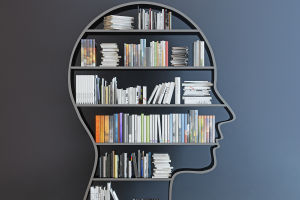Let's be real—most of us never think twice about our home lighting. We move into a new place, pick a few lights from the store, fasten them in, and move on. But guess what?
That simple lighting setup might be the reason your home doesn't feel as cozy, functional, or welcoming as it could be.
Today, let's walk through why proper lighting design matters so much for our homes—and how it can truly change the way we live and feel.
Lighting design vs. just putting up lights
To start, let's clear up a common mix-up: “lighting design” isn't just about choosing a pretty lamp or a bright bulb. It's a whole thought process that takes into account what each space in your home is for, and how light can make it work better.
A lot of people think all lighting is the same. As long as it's bright, it works, right? But think about it—would you wear flip-flops to a job interview? Nope. Same goes for lighting. Every space needs a different type of lighting to really work well.
What happens when there's no lighting plan?
If you've ever come home at night and fumbled around in the dark looking for the light switch—or felt like your eyes were tired after reading for a while—it's not just bad luck. It's bad lighting.
Here are some everyday situations where poor lighting can really bug us:
• Walking into a dark room and struggling to find the switch
• Reading alone under a big bright ceiling light that feels too harsh
• Shadows blocking your chopping board in the kitchen
• Eye strain when reading or working because of glare or poor light angles
• Lights that are too bright when you're trying to relax and wind down
If these feel familiar, Lykkers, you're not alone. These issues are signs that our lighting setup wasn't really thought through. And that's where lighting design steps in.
Good lighting starts with understanding your home
Let's say we break our homes down into the spaces we use: living room, bedroom, kitchen, dining area, bathroom, balcony, and maybe even a study or kids' room.
Each of these spaces serves a different purpose. So, we need to give each space the right kind of light for what we do there.
For example, instead of blasting the whole living room with one giant ceiling light, we can use hidden LED strips in the ceiling for soft background light, and add reading lamps or floor lamps around the sofa for focused light when needed. This makes the space cozier and more functional, depending on the mood or time of day.
Let's fix those common lighting struggles
Reading in bed? A wall sconce or bedside lamp works much better than that blinding ceiling light.
Can't see what you're chopping in the kitchen? Install small under-cabinet spotlights to light up the work surface directly.
Need to sneak into the bathroom at night? Use dim nightlights or soft motion-sensor strips that don't hurt your eyes.
Want to set the mood for dinner? Ditch the harsh ceiling lamp and hang a stylish pendant light over the table. That way, the food becomes the star and the atmosphere becomes instantly more inviting.
Lighting can shape your mood and experience
Let's walk through a few rooms together:
• Living room: Use a mix of soft indirect lighting and adjustable floor lamps so you can relax or host friends comfortably.
• Bedroom: Use warm, dimmable lighting. Add a reading lamp by your bed if you like to unwind with a book.
• Study or home office: Combine a soft room light with a bright desk lamp to reduce shadows and avoid eye strain.
• Entrance/foyer: A well-lit entryway gives you that instant sense of safety and warmth when coming home.
• Kitchen: Use layered lighting. General ceiling light, under-cabinet task lights, and even lighting inside glass cabinets can help brighten up your work and make it more enjoyable.
Even outdoor spaces can benefit
If you're lucky enough to have a little garden or patio, a few well-placed spotlights or path lights can completely change the vibe. Lighting a tree from below or adding soft lights along a walkway turns a basic backyard into a magical retreat.
So, why not design your lights the same way we design our furniture?
When we choose a couch or coffee table, we care about color, size, and style. So why treat lighting like an afterthought? Light changes how every piece of furniture looks and how we feel in the space.
Of course, the topic of lighting design goes deeper—from the types of light fixtures, color temperature, brightness levels, installation methods, switch positions, to smart lighting options—but we'll cover those in other posts.
Final thoughts for our Lykkers
We hope this helped you realize why good lighting design isn't just about making your home look nice—it's about making your life better, too. If you're feeling a little lost on where to start, don't worry. You can always get help from a lighting designer, or even just begin by rethinking how light works in your own daily life.
Lykkers, have you had any lighting mishaps or successes in your home? Drop your stories or questions—we'd love to hear them and help you brighten up your space, one smart light at a time!


